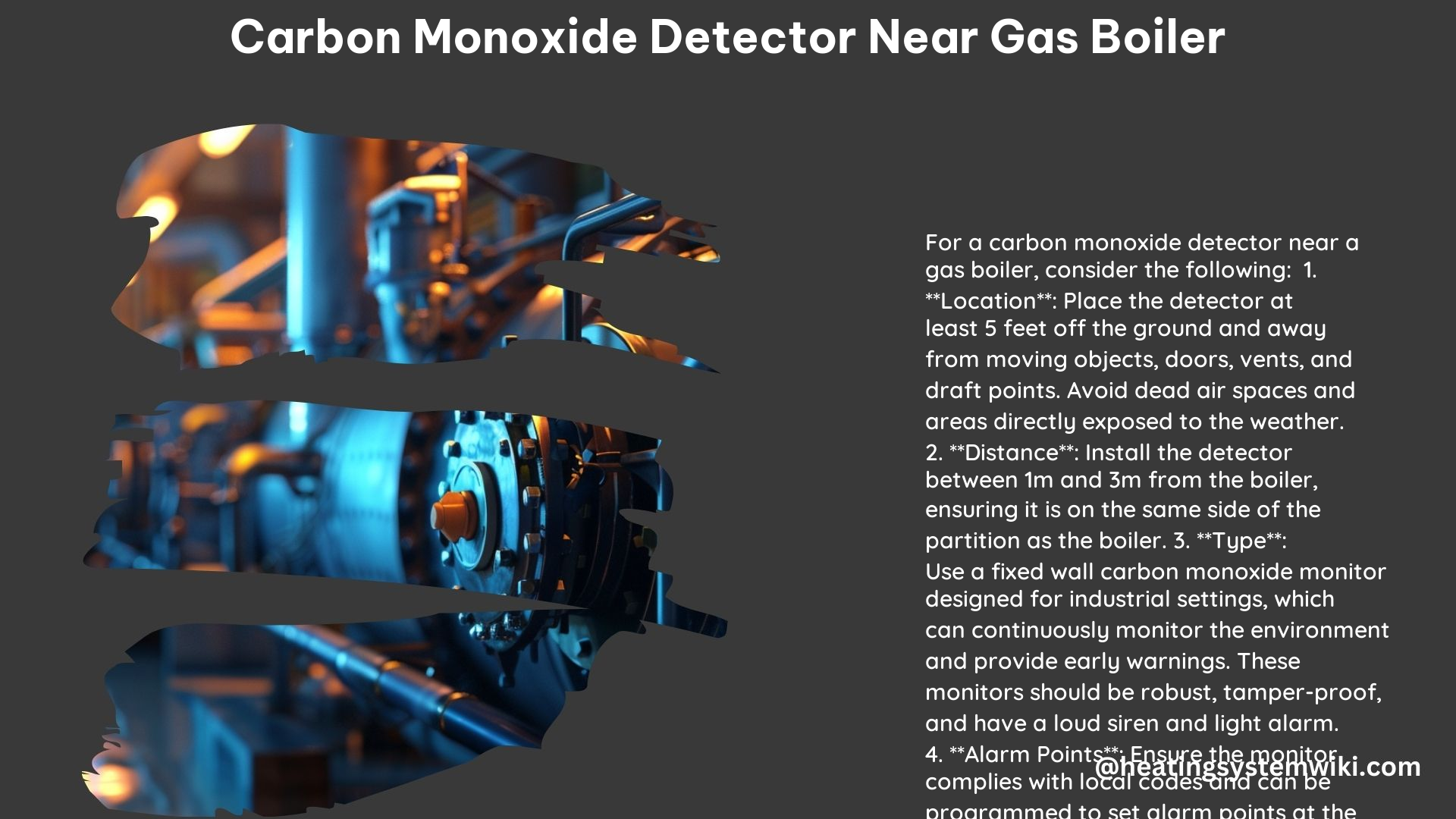When it comes to home safety, the installation and maintenance of a carbon monoxide (CO) detector near a gas boiler is a critical consideration. Carbon monoxide is an odorless, colorless gas that can be deadly if not detected and addressed promptly. This comprehensive guide will provide you with the essential information you need to ensure your gas boiler is properly monitored and your family is protected.
Where to Install a Carbon Monoxide Detector Near a Gas Boiler
The placement of your CO detector is crucial for effective detection and early warning. Here are the key factors to consider:
Horizontal Distance
The CO detector should be installed at a horizontal distance of between 1 to 3 meters (3.3 to 9.8 feet) from the potential source of the gas, which in this case is the gas boiler. This distance ensures the detector is close enough to the boiler to detect any CO leaks, but not so close that it is affected by drafts or other factors that could trigger false alarms.
Avoid Dead Air Spaces
It’s important to avoid installing the CO detector in dead air spaces, such as the peaks of vaulted ceilings or gabled roofs. These areas can prevent the CO from reaching the sensor in time to provide an early warning, as the gas may not circulate effectively.
Steer Clear of Vents and Draft Points
Placement near vents, flues, chimneys, or any forced/unforced air ventilation openings should be avoided. These areas can create air currents that could interfere with the detector’s ability to accurately measure CO levels.
Minimize Interference from Moving Objects and Drafts
Avoid installing the CO detector near moving objects, such as doors, windows, or people. These can create drafts that could affect the sensor’s readings and trigger false alarms.
Ensure Easy Visual and Physical Access
Position the CO detector in a location that is easily visible and accessible for regular testing and maintenance. This will help ensure the device is functioning properly and that any necessary battery replacements or other servicing can be carried out without difficulty.
How Often to Test a Carbon Monoxide Detector Near a Gas Boiler

Proper maintenance and testing of your CO detector are essential to ensure it remains in good working order and can reliably alert you to any dangerous CO levels.
Regular Testing
Regularly test your CO detector, following the manufacturer’s instructions. This typically involves pressing a test button or using a specialized test kit to simulate CO exposure and ensure the device is responding as expected.
Battery Replacement
Replace the batteries in your CO detector annually or as recommended by the manufacturer. Even if the device appears to be functioning correctly, old or depleted batteries can compromise its reliability.
Should I Install a Carbon Monoxide Detector Inside or Outside the Boiler Room?
The decision to install the CO detector inside or outside the boiler room depends on the specific circumstances and potential risks in your home.
Inside the Boiler Room
Placing the CO detector inside the boiler room can provide early warning of any CO leaks originating from the boiler itself. However, this location may be more prone to false alarms due to factors such as drafts, temperature fluctuations, and potential interference from other equipment.
Outside the Boiler Room
Installing the CO detector outside the boiler room, such as in a hallway or common area, can provide a more reliable warning of CO leaks that may affect the living spaces of your home. This location is less likely to be affected by factors that could trigger false alarms.
Technical Specifications of Carbon Monoxide Detectors Near Gas Boilers
When selecting a CO detector for use near a gas boiler, it’s important to consider the following technical specifications:
UL Listed Detectors
Look for CO detectors that are Underwriters Laboratories (UL) listed. These devices are designed to meet strict safety standards and will not alarm until the CO level reaches and maintains 70 parts per million (ppm) for 60 to 180 minutes.
Low-Level Monitors
For more sensitive detection, consider using low-level CO monitors that can alert at CO levels as low as 15-20 ppm. These devices can provide an early warning of potential issues, allowing you to address the problem before it becomes a serious hazard.
Industrial Fixed Wall Monitors
For commercial or industrial settings with gas boilers, such as in a large apartment building or office complex, fixed wall-mounted CO monitors with industrial-grade specifications may be the best choice. These devices can continuously monitor the boiler room environment and provide reliable, real-time data on CO levels.
Additional Tips and Considerations
To further enhance the safety and effectiveness of your CO detection system, consider the following additional tips and recommendations:
Annual Boiler Maintenance
Regularly maintaining and servicing your gas boiler is crucial for preventing CO leaks. Ensure that a qualified technician inspects and services the boiler at least once a year to identify and address any potential issues.
Combination Smoke/CO Alarms
For comprehensive home safety, consider installing combination smoke and CO alarms. These devices can detect both fire and carbon monoxide hazards, providing a unified early warning system to protect your family.
By following the guidelines outlined in this comprehensive guide, you can ensure that your gas boiler is properly monitored and your home is equipped with the necessary safeguards against the dangers of carbon monoxide. Remember, the safety of your family should always be the top priority when it comes to home maintenance and appliance installation.
